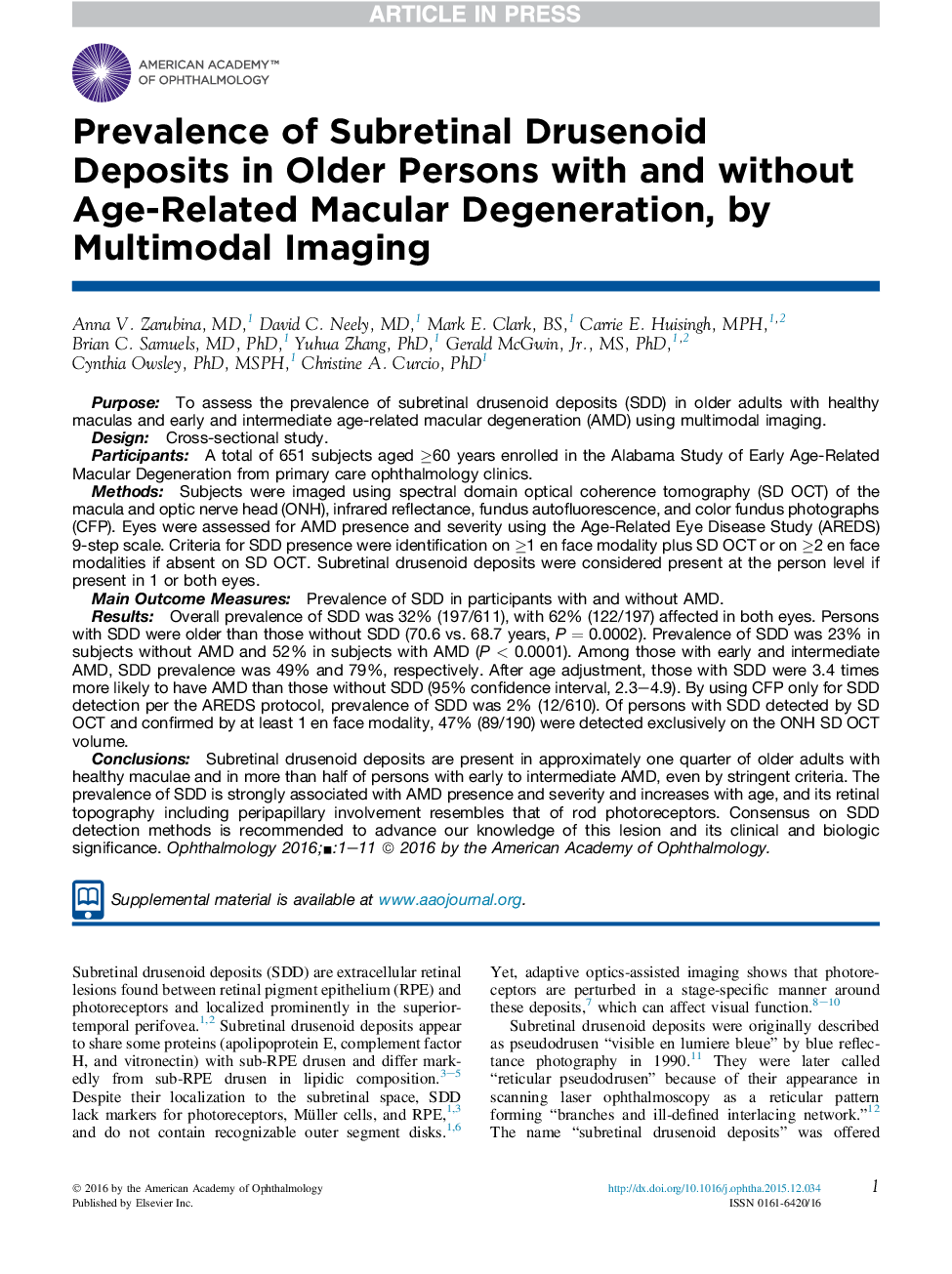| Article ID | Journal | Published Year | Pages | File Type |
|---|---|---|---|---|
| 6199848 | Ophthalmology | 2016 | 11 Pages |
Abstract
Subretinal drusenoid deposits are present in approximately one quarter of older adults with healthy maculae and in more than half of persons with early to intermediate AMD, even by stringent criteria. The prevalence of SDD is strongly associated with AMD presence and severity and increases with age, and its retinal topography including peripapillary involvement resembles that of rod photoreceptors. Consensus on SDD detection methods is recommended to advance our knowledge of this lesion and its clinical and biologic significance.
Keywords
CFPICGRPEFAFBDEsAREDSSDDBeaver Dam Eye StudyAMDRPDONHSD OCTNIAApo A-IcSLOBMEsCNVapo Bgeographic atrophyIndocyanine green angiographyfluorescein angiographyApolipoprotein A-IApolipoprotein BConfocal scanning laser ophthalmoscoperetinal pigment epitheliumOctInfrared reflectanceAge-Related Eye Disease StudyOptical coherence tomographyspectral domain optical coherence tomographyOptic nerve headage-related macular degenerationreticular pseudodrusenchoroidal neovascular membraneconfidence intervalfundus autofluorescenceREFreferenceodds ratioPADC-reactive proteinCRPBlue Mountains Eye Study
Related Topics
Health Sciences
Medicine and Dentistry
Ophthalmology
Authors
Anna V. MD, David C. MD, Mark E. BS, Carrie E. MPH, Brian C. MD, PhD, Yuhua PhD, Gerald MS, PhD, Cynthia PhD, MSPH, Christine A. PhD,
